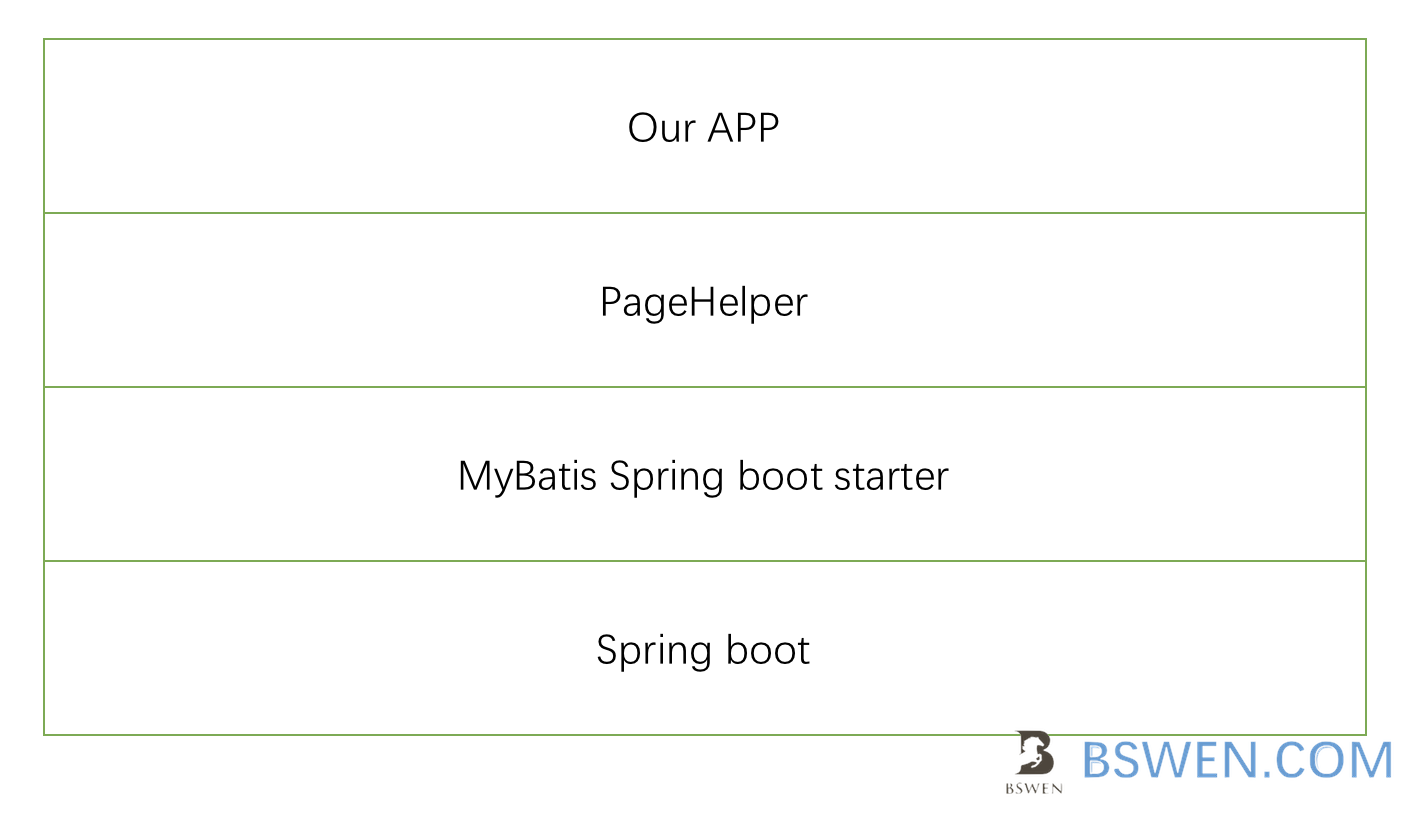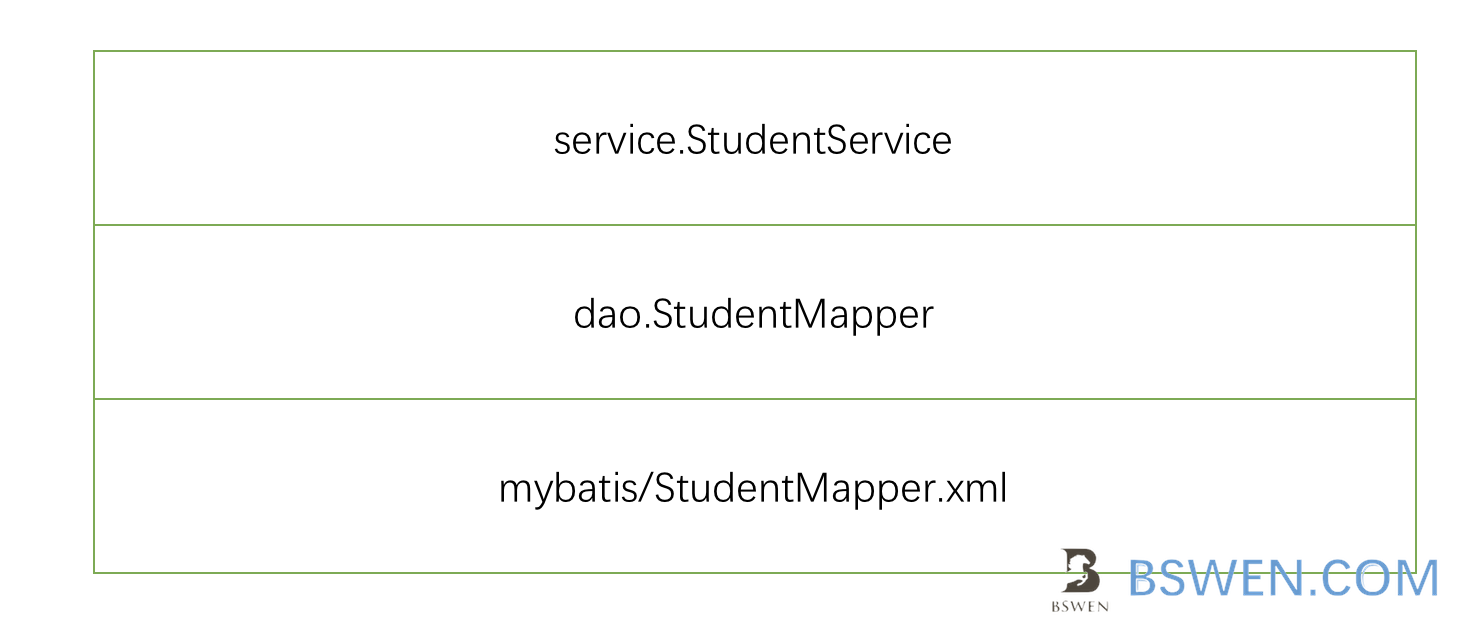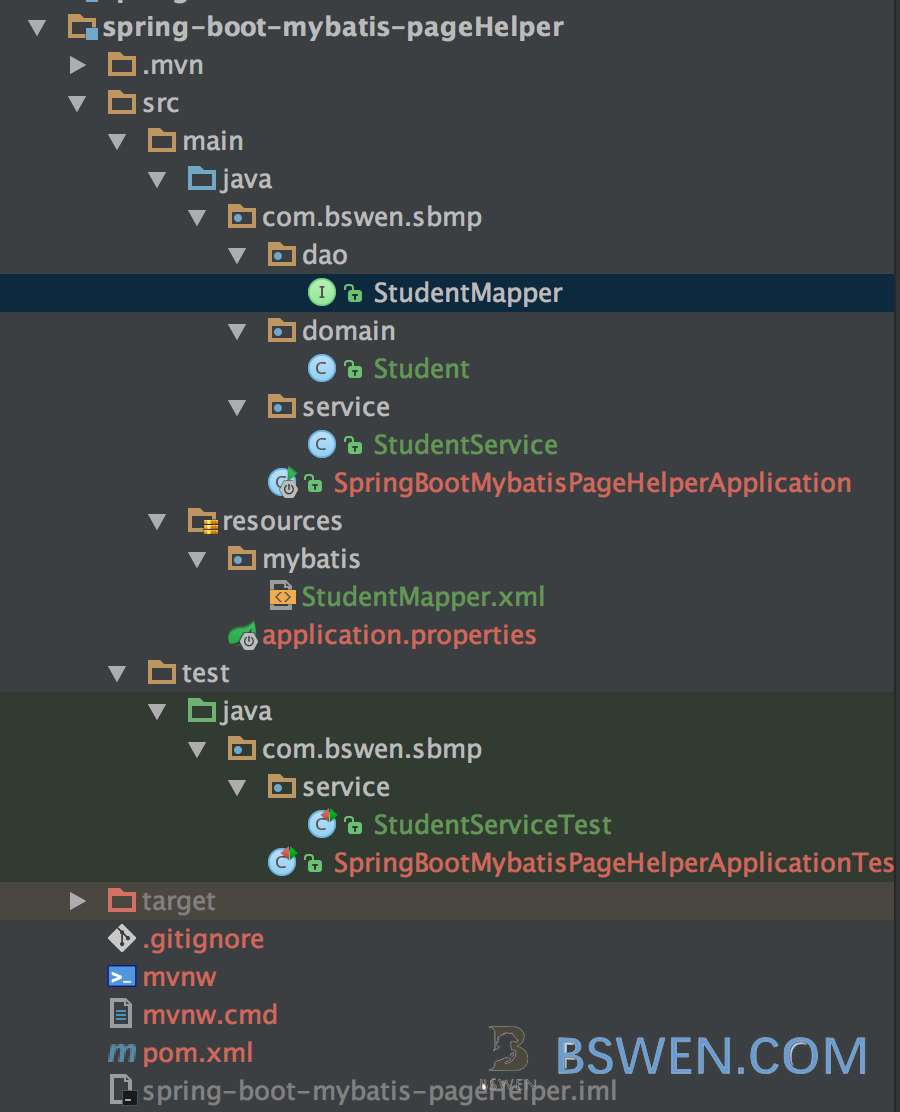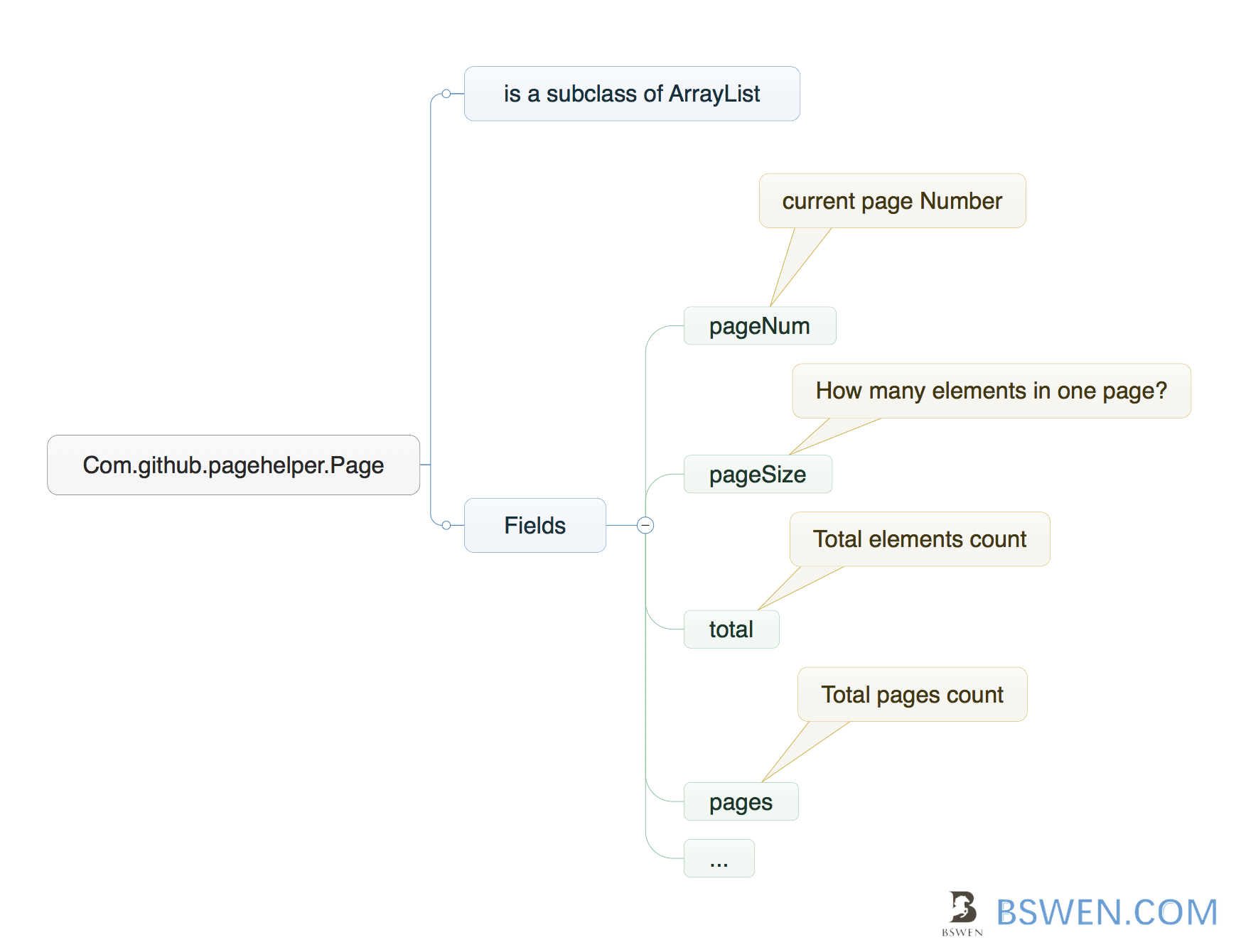MyBatis and PageHelper example
1. Introduction
This post demonstrates how to query a database with pagination using Spring Boot, MyBatis, and the PageHelper plugin.
2. Environments
- Spring Boot 2.0.2+
- PageHelper Spring Boot Starter 1.2.5
- MyBatis Spring Boot Starter 1.3.2
- Java 1.8
3. The Pom.xml
Spring Boot version:
<dependencyManagement> <dependencies> <dependency> <groupId>org.springframework.boot</groupId> <artifactId>spring-boot-dependencies</artifactId> <version>2.0.2.RELEASE</version> <type>pom</type> <scope>import</scope> </dependency> </dependencies></dependencyManagement>All dependencies:
<dependency> <groupId>org.mybatis.spring.boot</groupId> <artifactId>mybatis-spring-boot-starter</artifactId> <version>1.3.2</version></dependency>
<dependency> <groupId>mysql</groupId> <artifactId>mysql-connector-java</artifactId> <scope>runtime</scope></dependency><dependency> <groupId>org.springframework.boot</groupId> <artifactId>spring-boot-starter-test</artifactId> <scope>test</scope></dependency><!-- lombok --><dependency> <groupId>org.projectlombok</groupId> <artifactId>lombok</artifactId> <optional>true</optional></dependency><!--pagehelper --><dependency> <groupId>com.github.pagehelper</groupId> <artifactId>pagehelper-spring-boot-starter</artifactId> <version>1.2.5</version></dependency>4. The dependencies explanation
4.1 The PageHelper
PageHelper is an open-source project designed to simplify pagination in Spring Boot and MyBatis applications. It functions as a MyBatis plugin.
For detailed usage instructions, refer to this article.
4.2 The Lombok
Lombok is an IDE plugin that helps reduce boilerplate code. In this post, we use Lombok to generate getters and setters for the domain object.
5. The architecture of this app

- PageHelper is a MyBatis plugin.
- MyBatis has a Spring Boot starter.
6. The database, table, and initial data
For demonstration purposes, I set up a local database as follows:
CREATE DATABASE `test` CHARACTER SET utf8 COLLATE utf8_bin;There is a table tbl_student in the database:
CREATE TABLE `tbl_student` ( `ID` int(10) NOT NULL AUTO_INCREMENT, `NAME` varchar(100) NOT NULL, `BRANCH` varchar(255) NOT NULL, `PERCENTAGE` int(3) NOT NULL, `PHONE` int(10) NOT NULL, `EMAIL` varchar(255) NOT NULL, PRIMARY KEY (`ID`)) ENGINE=InnoDB AUTO_INCREMENT=2 DEFAULT CHARSET=utf8;Insert five records into the table:
INSERT INTO `tbl_student` (`ID`, `NAME`, `BRANCH`, `PERCENTAGE`, `PHONE`, `EMAIL`)VALUES7. The domain class Student
import lombok.Data;@Datapublic class Student { private int id; private String name; private String branch; private int percentage; private int phone; private String email;}- The
@Dataannotation from Lombok generates getters, setters, and constructors for theStudentclass.
8. The app codes
8.1 The app code layers

- Service layer:
StudentService, which supports finding students by page. - DAO layer: A MyBatis mapper interface.
- XML layer: A MyBatis XML file defining SQL queries.
8.2 The app project layout

- A folder named
mybatisis created insrc/main/resources.
8.3 The application.properties
Add these properties to your application.properties:
spring.datasource.driverClassName = com.mysql.jdbc.Driverspring.datasource.url = jdbc:mysql://localhost:3306/test?useUnicode=true&characterEncoding=utf-8spring.datasource.username = rootspring.datasource.password = 123456
# MyBatis entity scan packagesmybatis.type-aliases-package=com.bswen.sbmp.domain# Mapper.xml locationmybatis.mapper-locations=classpath*:/mybatis/*Mapper.xml
logging.level.com.bswen.sbmp=debug# Debug for PageHelper librarylogging.level.com.github.pagehelper=debuglogging.level.org.springframework.web=debuglogging.level.org.springframework.transaction=debuglogging.level.org.mybatis=debug
# PageHelper plugin configurationpagehelper.helperDialect=mysqlpagehelper.reasonable=truepagehelper.supportMethodsArguments=truepagehelper.params=count=countSql8.4 The mapper XML
The StudentMapper.xml content:
<?xml version="1.0" encoding="UTF-8" ?><!DOCTYPE mapper PUBLIC "-//mybatis.org//DTD Mapper 3.0//EN" "http://mybatis.org/dtd/mybatis-3-mapper.dtd" ><mapper namespace="com.bswen.sbmp.dao.StudentMapper" > <resultMap id="baseResultMap" type="com.bswen.sbmp.domain.Student" > <id column="id" property="id" jdbcType="INTEGER" /> <result column="name" property="name" jdbcType="VARCHAR" /> <result column="phone" property="phone" jdbcType="VARCHAR" /> <result column="email" property="email" jdbcType="VARCHAR" /> </resultMap>
<sql id="Base_Column_List" > id, name, phone, email </sql>
<select id="findByPage" resultMap="baseResultMap"> select <include refid="Base_Column_List" /> from tbl_student </select></mapper>- A
resultMapandcolumnListare defined for reuse in SQL queries. - The
findByPageSQL query matches the mapper interface. - Pagination is handled by the PageHelper plugin, so no
LIMITclause is needed.
8.5 The mapper interface
The StudentMapper interface:
@Mapperpublic interface StudentMapper { Page<Student> findByPage();}- The
findByPagemethod has no parameters; pagination parameters are set elsewhere.
8.6 The service class
The StudentService class:
@Service@Transactional(readOnly = true)public class StudentService { @Autowired private StudentMapper studentMapper;
public Page<Student> findByPage(int pageNo, int pageSize) { PageHelper.startPage(pageNo, pageSize); // Set pagination parameters return studentMapper.findByPage(); // Execute the query }}PageHelper.startPagesets the page number and size.- The mapper executes the paginated query.
8.7 The test case
The StudentServiceTest class:
@RunWith(SpringRunner.class)@CommonsLog@SpringBootTestpublic class StudentServiceTest { @Autowired private StudentService studentService;
@Test public void testFindByPage() { Page<Student> students = studentService.findByPage(1, 2); // Query pageNo=1, pageSize=2 assertEquals(students.getTotal(), 5); assertEquals(students.getPages(), 3); log.debug(students.toString()); }}- With 5 records in the table, querying the first page with a page size of 2 should return a total count of 5 and 3 pages.
- Lombok’s
@CommonsLoggenerates alogobject for the test case.
Running the test case produces a green bar:

The console output:
Page{count=true, pageNum=1, pageSize=2, startRow=0, endRow=2, total=5, pages=3, reasonable=true, pageSizeZero=false}[Student(id=1, name=jack, branch=null, percentage=0, phone=1211232, [email protected]), Student(id=2, name=mark, branch=null, percentage=0, phone=333, [email protected])]9. The com.github.pagehelper.Page class
After calling studentService.findByPage, a Page<Student> object is returned. Its structure is as follows:

Summary
This post demonstrated how to implement pagination in a Spring Boot application using MyBatis and the PageHelper plugin. Key steps included configuring the build.gradle file, setting up the database, and writing service and mapper classes. The PageHelper plugin simplifies pagination by eliminating the need for manual LIMIT clauses in SQL queries. The example source code is available on GitHub.
Final Words + More Resources
My intention with this article was to help others share my knowledge and experience. If you want to contact me, you can contact by email: Email me
Here are also the most important links from this article along with some further resources that will help you in this scope:
Oh, and if you found these resources useful, don’t forget to support me by starring the repo on GitHub!